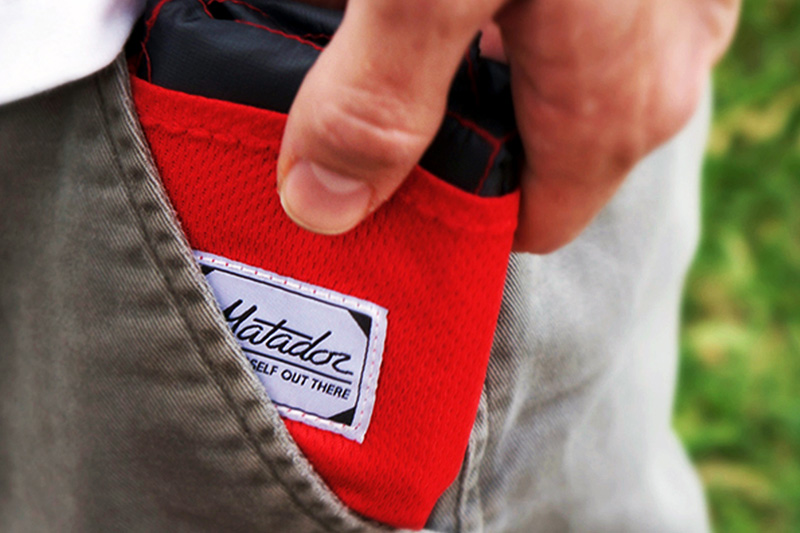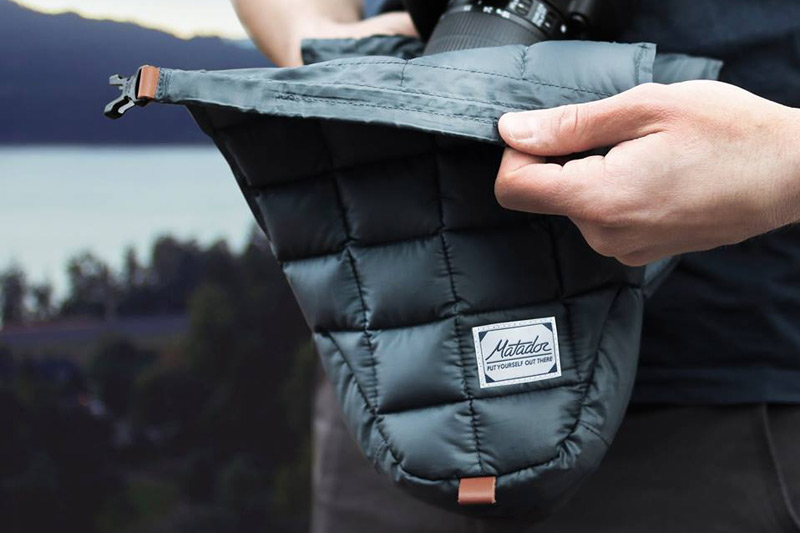Packable adventure gear brand Matador is doing us a huge solid by making outdoor products that make us say “Torro! Torro!” to the daunting mountains and molehills we set out to explore.
Founded by a former Senior Product Designer at GoPro, Chris Clearman took his design prowess to the world of outdoor solutions to innovate bags and blankets that fit the needs of a true, unadulterated adventurist. Whether it’s a weekend trip to Boston or an endurance trek at Machu Picchu, Matador’s mission is to “bring on the elements.” Its method? Get a gang of outdoor and adventure wildcards and have them do all the designing and testing.
It all started as a simple pursuit to make a pocket-sized blanket in the confines of a 10 x 10-bedroom operation in San Francisco. The team was fed up with using their own jackets as blankets to sit on in the park or at a hike rest-stop. We’d bet money if you spend time outdoors you’ve run into the same problem.

After uprooting to the adventurists basin of Boulder, Colorado in 2015, Matador swelled into a roughly 10-item range of drool-worthy and hyper useful duffels, packs, blankets, and camera carriers. Founder Clearman told The Manual that after the shocking success of the pocket blanket, “I was shopping for a trip and noticed I couldn’t find a single packable backpack that I actually wanted. It was all cheap junk, not real gear. I sat down and started designing one myself.”
You can also credit some of Matador’s product expansion to its burgeoning ambassador team of 14 or so, including Hawaii-based photographer Kevin O’Reilly, graphic designer/mountain man Joel Matuszczak, and others with the literal job title of athlete, filmmaker, photographer, and thrill-seeker.
Between the in-house crew and remote ambassadors, Matador’s vibe definitely has some kick behind it. When asked why all its products are gray, the initial response from their design team was, “because gray is the right color.” Once elaborated, you get a gist of just how proficient this brand is at hitting adventure on the head, and doing it with attitude. They added that gray doesn’t show dirt like white or black, it isn’t polarizing like orange or green, stylistically fits in the woods or city, and unlike white, can be worn after Labor Day.
If you’re asking how exactly this team of misfits made Matador take off, assuming they took to Kickstarter or Indeigogo, we’ll correct that misconception with a sturdy hell no. Matador was created as a pure bootstrapped start-up, without outside influence from suits and investors. In today’s world of wannabe outdoor companies, this is almost unheard of… and largely why Matador’s products kick so much ass and have amounted a hardcore group of loyal followers.
If you need another indicator of Matador’s popularity and design savvy, go try to buy its signature Transit30 Duffel, Daylite16 Backpack, or Camera Base Layer. Each adorn a harrowing Sold Out sign, and will be that way until mid-January 2017.
That’s because pieces like the Transit 30 Duffel fit into your palm while being a 30-liter pack made of waterproof (not water-resistant, gents) siliconized Cordura ripstop material. For reference, Cordura is used amongst high-quality outdoor brands Black Diamond, Big Agnes, Eddie Bauer, Carhartt, and Astral.

Another item to swoon over is the ultra lightweight, 68 grams (that’s lighter than an egg) Camera Base Layer, which looks like a down sleeping bag for your DSLR. But in the re-stocking meantime, we’re getting our hands on Matador’s most expensive pack, the Beast28 Packable Technical ($89.99), its Droplet Wet Bag ($14.99) (because we don’t recommend putting your sweaty cotton shirt with the rest of your dry clothes), and the always essential Matador Mini pocket blanket ($19.99). It’s about god damn time I stop using my technical baselayer as a blanket.
Photos courtesy Matador.


